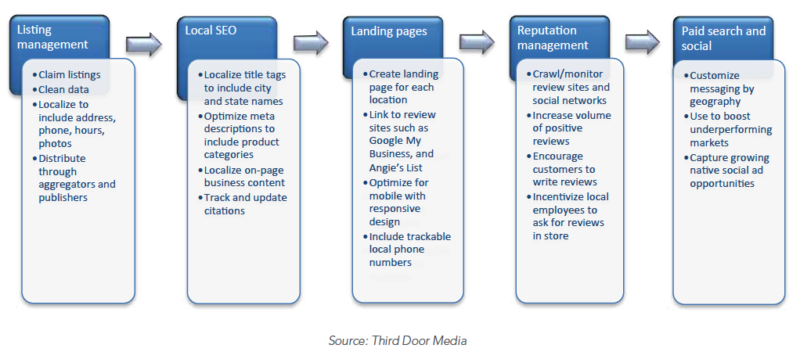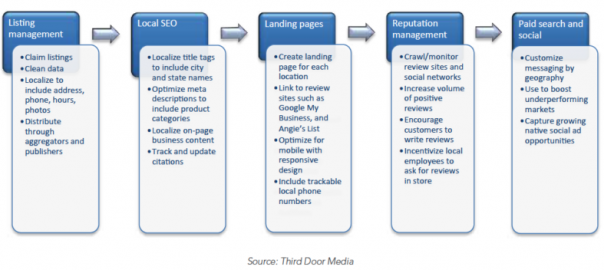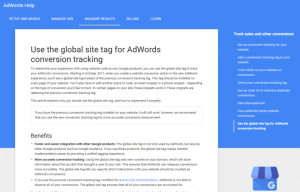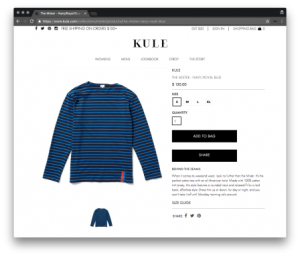Where should multi-location local business focus their energies and how should they deploy tools to help?
What goes into a successful local marketing campaign? Best practices that have emerged focus on these five campaign elements:
- Listing management.
- Local SEO.
- Local landing pages.
- Reputation management.
- Paid search and social media.
Industry experts agree that accurate, up-to-date business location data is the lynchpin for all local marketing initiatives. Enterprises must first assess the health of every local data point, including business name, address, phone (a.k.a. “NAP”), and business hours. From there, more effective local landing pages, search optimization, monitoring of online reviews and ratings, and engaging in paid search and social advertising should follow.
In this article, we’ll discuss each of these campaign elements in more detail. When planned and executed as a five-step process, these elements can deliver an effective local marketing strategy for national brands with multiple locations.

1. Listing management
The foundation of successful local marketing is clean data and accurate listings – including NAP, maps, photos, and business hours. Every mention of your business on the web is known as a “citation” and may include all or part of your NAP. Making sure this information is consistent is crucial to being found locally; even minor discrepancies in a company name (“ABC Corp.” vs. “ABC Inc.”) can have a negative impact on your results.
National brands lose a huge amount of local business every year due to inaccurate online listings and the poor SERP rankings that result. Perhaps nothing can turn away a potential customer more than a disconnected phone number or a closed store.
Discover the benefits of tools to manage marketing for local businesses and get to know the vendors offering these solutions. Download our buyer’s guide to local marketing solutions for multi-location businesses today!
It is critical to claim your local listings by providing accurate information to search engines and online directories (namely Google, Facebook, Apple Maps, Bing and Yelp). In travel and hospitality verticals, brands will also benefit from claiming listings on sites such as Kayak, TripAdvisor or OpenTable. There are a range of third party data aggregators and local data or presence management services (LMS) that will manage listings for multilocation brands.
Unclaimed listings occur when online directories index and publish business pages for your business without your knowledge through scraping the web or purchasing outdated business data. Once these listings are published, Google may create a business page from this data, which often means the correct category for your business has not been selected, your keywords have not been targeted, and other information may be inaccurate as it was obtained from unreliable sources.
Claiming your listings also gives the site publisher a direct, verified relationship with your organization. It establishes your brand as the listing’s owner and gives you control over all content and updates. Several LMS vendors will claim listings on their clients’ behalf as part of their listing management services.
Local listings should include as much information as is available – product descriptions and categories, services provided, hours of operation, coupons, photos, and payments accepted. This type of accurate, updated, and consistent local data will drive high search engine rankings and ensure that online searchers can find your locations.
Photos, in particular, can have a major impact – restaurants with 11-20 photos see “double the amount of diner interaction over others with no photos at all” on TripAdvisor, and on Yelp, businesses with 1-5 reviews and at least 10 photos see 200% more user views than a business with no photos and the same number of reviews. Overall, businesses that complete their profiles on TripAdvisor and Yelp may see up to five times more customer leads each month.
Once claimed, listings must also be regularly monitored. So even if your listing was once accurate, you need to check regularly that it has not been changed without your knowledge.
Listings should be distributed to the leading search engines, online directories and social media networks. Beyond the major sites such as Google, Facebook, Yelp and Apple Maps, there are selected directories and vertical sites that remain important. These will depend on your industry.
However, it’s no longer necessary to distribute your data to many dozens of obscure directories that have no consumer usage. Most LMS providers will ensure that business data reach all the necessary and relevant directories online, although their individual distribution networks may vary somewhat from one to another.
2. Local SEO
Local SEO is a regularly changing discipline with its own specific rules and best practices that are often distinct from general SEO. However, local SEO and listing management are closely linked: accurate, complete, and consistent listings improve search engine rankings. As search algorithms continue to drive more relevant results based on user locations, it has become more critical to optimize local landing pages with neighborhood information. Google in particular is constantly updating its API to enable more efficient SEO.
Local pages need to be found on their own, as well as through your national brand site. This means localizing how your site is coded; how you treat name, address, and phone number; and how you structure your URL through the following:
- Localize title tags to include city and state names;
- Optimize meta descriptions beyond brand name to include product categories;
- Implement localized schema markup for local business names, addresses, and phone numbers;
- Localize URL structures to include street names and product categories; and
- Localize on-page business content to include hours, driving directions, and local descriptions.
All location data should be optimized to maximize your SEO efforts. This includes location data changes, new store openings, store closings or moves to new locations, business hours changes, holiday hours, etc. It is essential that this data is current and fed to internet yellow pages (IYPs) since search engines cross-verify their data with IYP data. When the data matches, it becomes trusted, verified data and results in better rankings.
3. Local landing pages
Each brand location should have its own mobile-friendly landing page. Consumers are looking for you locally – often on the go – and a local landing page can be the hub for all local marketing and SEO efforts. It captures consumer demand, streamlines marketing efforts, and provides metrics for future campaign optimization, which is extremely important when you are relying on thousands of local websites.
Local landing pages should be simple yet comprehensive, featuring the business name, address, phone number, products carried, store hours, and even a photo of the business owner or storefront. These pages should be responsively designed with title tags and descriptive schema markup to send information to the search engines.
Incorporating trackable local phone numbers can help you capture the growing audience of mobile phone users that want to contact local businesses and enable you to measure campaign performance. Links to review sites such as Google My Business, Yelp, Facebook and other industry-relevant sites such as TripAdvisor should also be included.
Store locators also should be easy to browse and responsively designed for mobile users. Apply product feeds to local landing pages to provide users with access to “in-stock” products or real-time inventory.
4. Reputation management (online reviews and ratings)
User-generated reviews and ratings continue to have a significant influence on potential buyers, with 76% trusting online reviews as much as recommendations from family and friends, and (BrightLocal, Local Consumer Review Survey 2019). Consumers read an average of ten reviews before trusting a business.
Major search and review sites assign significant weight to online reviews. Google’s review count and score are factored into local search rankings, meaning that a business’s local ranking will improve the more reviews and positive ratings they have. Customer reviews are some of the most compelling marketing content available to businesses and have the greatest potential to influence new customers.
The best way to increase the number of positive reviews being written about your locations is to ask customers to write them. Make it easy to do so by including a widget or button that offers one-click access to review writing. However, it is important to encourage reviews in a way that does not imply a quid pro quo.
Many companies still offer incentives or contests to gain reviews, but Yelp does not permit solicitation of any kind and will punish brands that do this. Google allows businesses to encourage reviews by reminding customers to leave feedback on Google. However, Google’s Local Review Policy prohibits businesses from offering money or products for writing reviews, as well as setting up review stations or kiosks within a store.
As more and more businesses strive for positive, user-generated reviews, it’s important to make sure that these are authentic. Consumers have grown more skeptical about reviews, due to publicity around businesses that have stooped to using fake reviews. Some 82% of survey respondents told BrightLocal that they had read a fake review in the last year – up from 74% in 2018 and it’s likely that many consumers — especially older, less tech-savvy users — can’t always spot a fake review.
Negative reviews are inevitable and should be managed. Follow up with negative reviewers to address their issues and turn their experiences with your organization into positive ones. While the writing of reviews cannot be automated, it is possible to monitor reviews using local marketing automation tools.
5. Local paid search/social
Paid media – namely search, display, and social – are core components of a sound digital marketing strategy. Native social advertising that can be geographically targeted are now commonplace across networks such as Facebook and Twitter.
Localizing your brand’s paid search or social efforts is essential, as consumers have come to expect local and personally relevant results and content. Google’s Promoted Pins across Google.com and Google Maps, are one way for brands to connect with mobile consumers and drive offline conversions.
Customizing messages for users in a particular geographic market can communicate the right per-store promotional information and communicate offline “flash sales” digitally. Local search and social can be used to capitalize on regions where business is strongest or become a lever that can supplement marketing in underperforming regions to increase awareness and improve sales.
Discover the benefits of tools to manage marketing for local businesses and get to know the vendors offering these solutions. Download our buyer’s guide to local marketing solutions for multi-location businesses today!
Marketing Land – Internet Marketing News, Strategies & Tips
(74)
Report Post








